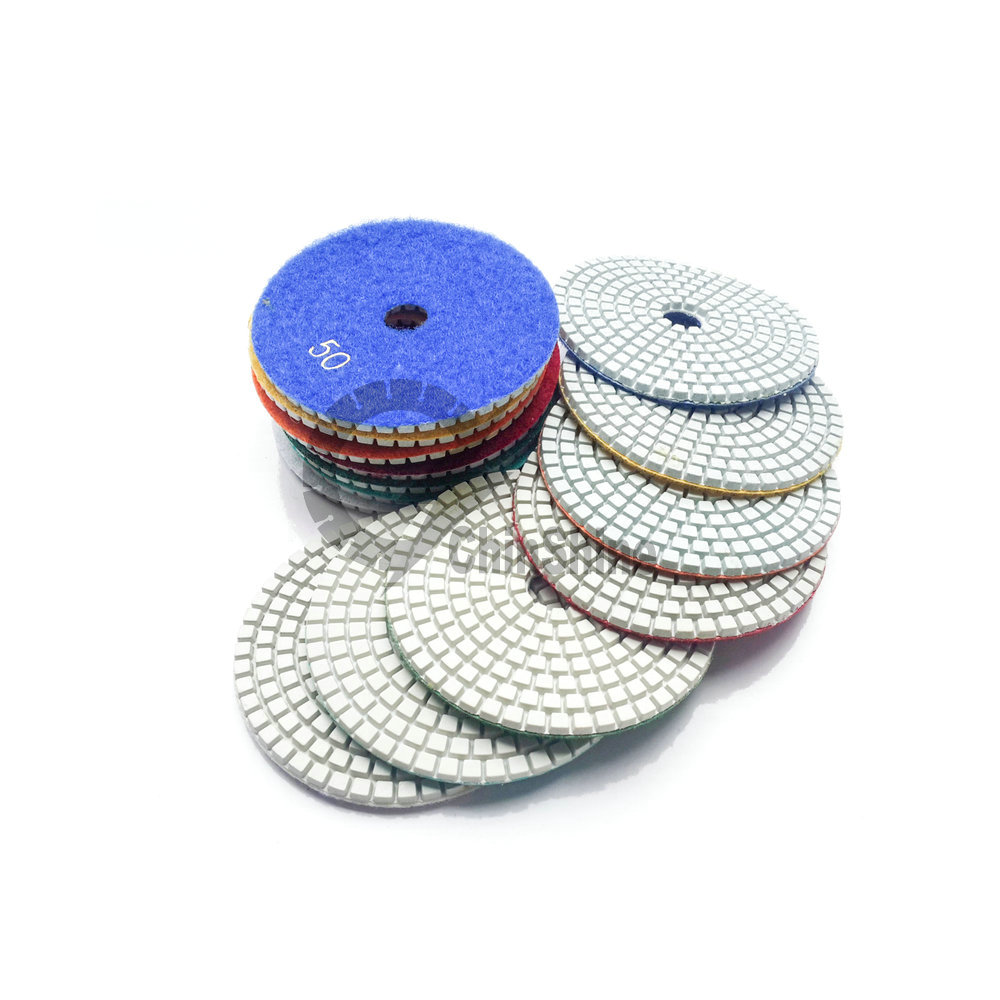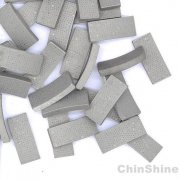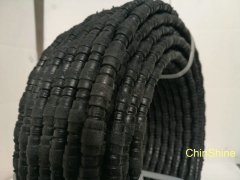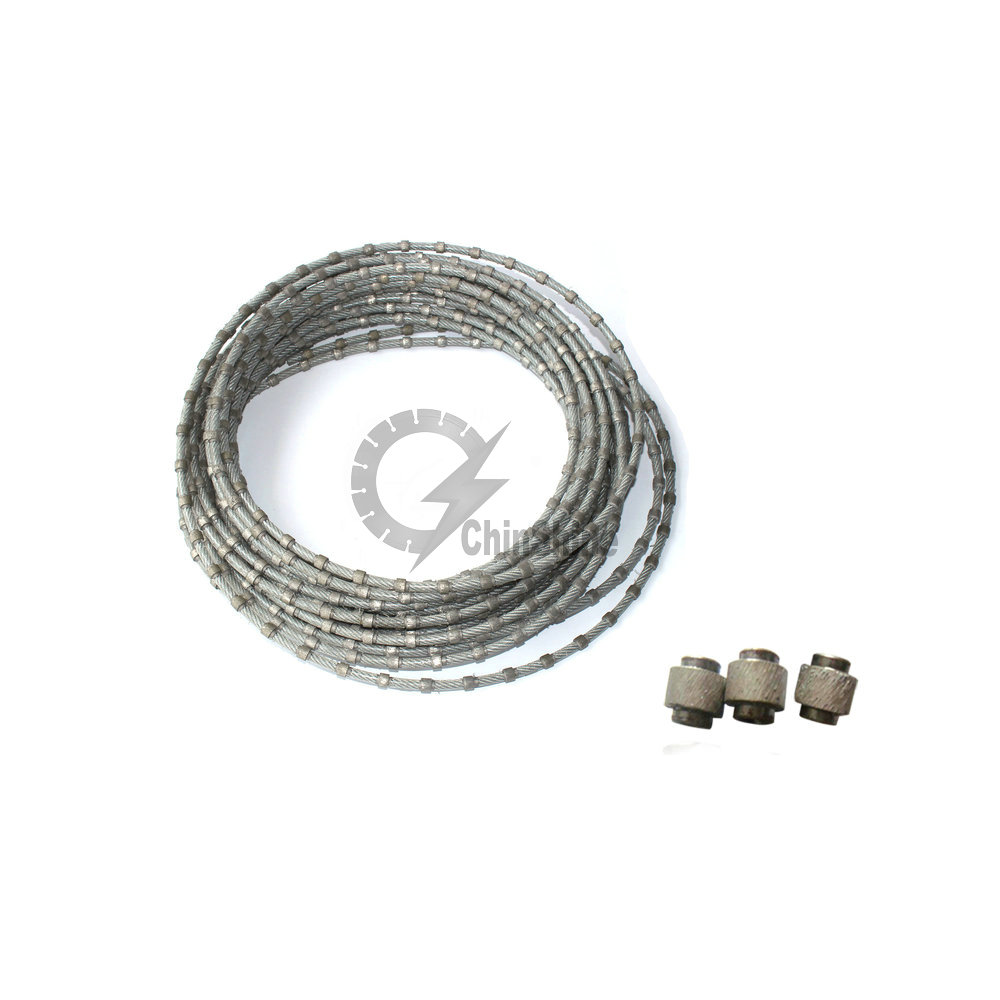The main factors when choosing the right diamond blade are;
Cost of the product + Cost of labour versus Time it takes to get the job done = Profit
For example most contactors would rather spend less time grinding the majority of a concrete floor and compromise some diamond wear than spend 2 or 3 more days in labour to get the same result with less diamond wear. Generally the labour will cost more than the diamond wear, the job gets finished quicker and the contractor can move on to the next job.
Bond Selection.
We refer to bond as the metal or the resin that bonds the diamond grit together.
Soft bonds (S) is used on hard concrete, the bond wears faster than the diamond so the diamond segment stays sharp and grinds efficiently. When selecting this bond type always check the wear after 10 minutes of use, if there is noticeable wear in this time change to a Hard Bond (H) diamond segment.
Hard Bond (H) is used on soft or green concrete which is more abrasive so the bond doesn’t wear too quickly. If this bond type is not cutting fast enough change to a Soft Bond (S) diamond segment of see some of the methods below.
Other important considerations to get the best performance out of your diamond blades;
Weight V’s Speed + Surface area V’s Temperature
Increase grinding pressure = faster more aggressive grinding
Decrease grinding pressure = less aggressive grinding
Speed Increase speed of grinding = less aggressive grinding
Decrease speed of grinding = more aggressive grinding
Surface Area less segments used = more pressure/weight per segment and more aggressive grinding
More segments used = less pressure/weight per segment and less aggressive grinding
Temperature For diamond blade to work efficiently they need to stay cool. If you let them get to hot the metal bond will glaze over the diamond and stop doing its job. If you see the blades leaving dark marks on the concrete it is too hot. One effective way to keep the blades cool is to lightly spray the slab with water. Varying amount of water will affect the grinding effiecientcy differently. Have a try and decide what works best for you. Remember puddles of water a not good if you are using a dust extraction system.
All concrete is different so adjust the above techniques to suit what you are trying to achieve.
The main factors when choosing the right diamond blade are;
Cost of the product + Cost of labour versus Time it takes to get the job done = Profit
For example most contactors would rather spend less time grinding the majority of a concrete floor and compromise some diamond wear than spend 2 or 3 more days in labour to get the same result with less diamond wear. Generally the labour will cost more than the diamond wear, the job gets finished quicker and the contractor can move on to the next job.
Bond Selection.
We refer to bond as the metal or the resin that bonds the diamond grit together.
Soft bonds (S) is used on hard concrete, the bond wears faster than the diamond so the diamond segment stays sharp and grinds efficiently. When selecting this bond type always check the wear after 10 minutes of use, if there is noticeable wear in this time change to a Hard Bond (H) diamond segment.
Hard Bond (H) is used on soft or green concrete which is more abrasive so the bond doesn’t wear too quickly. If this bond type is not cutting fast enough change to a Soft Bond (S) diamond segment of see some of the methods below.
Other important considerations to get the best performance out of your diamond blades;
Weight V’s Speed + Surface area V’s Temperature
Increase grinding pressure = faster more aggressive grinding
Decrease grinding pressure = less aggressive grinding
Speed Increase speed of grinding = less aggressive grinding
Decrease speed of grinding = more aggressive grinding
Surface Area less segments used = more pressure/weight per segment and more aggressive grinding
More segments used = less pressure/weight per segment and less aggressive grinding
Temperature For diamond blades to work efficiently they need to stay cool. If you let them get to hot the metal bond will glaze over the diamond and stop doing its job. If you see the blades leaving dark marks on the concrete it is too hot. One effective way to keep the blades cool is to lightly spray the slab with water. Varying amount of water will affect the grinding effiecientcy differently. Have a try and decide what works best for you. Remember puddles of water a not good if you are using a dust extraction system.
All concrete is different so adjust the above techniques to suit what you are trying to achieve.
The main factors when choosing the right diamond blade are;
Cost of the product + Cost of labour versus Time it takes to get the job done = Profit
For example most contactors would rather spend less time grinding the majority of a concrete floor and compromise some diamond wear than spend 2 or 3 more days in labour to get the same result with less diamond wear. Generally the labour will cost more than the diamond wear, the job gets finished quicker and the contractor can move on to the next job.
Bond Selection.
We refer to bond as the metal or the resin that bonds the diamond grit together.
Soft bonds (S) is used on hard concrete, the bond wears faster than the diamond so the diamond segment stays sharp and grinds efficiently. When selecting this bond type always check the wear after 10 minutes of use, if there is noticeable wear in this time change to a Hard Bond (H) diamond segment.
Hard Bond (H) is used on soft or green concrete which is more abrasive so the bond doesn’t wear too quickly. If this bond type is not cutting fast enough change to a Soft Bond (S) diamond segment of see some of the methods below.
Other important considerations to get the best performance out of your diamond blades;
Weight V’s Speed + Surface area V’s Temperature
Increase grinding pressure = faster more aggressive grinding
Decrease grinding pressure = less aggressive grinding
Speed Increase speed of grinding = less aggressive grinding
Decrease speed of grinding = more aggressive grinding
Surface Area less segments used = more pressure/weight per segment and more aggressive grinding
More segments used = less pressure/weight per segment and less aggressive grinding
Temperature For diamond blades to work efficiently they need to stay cool. If you let them get to hot the metal bond will glaze over the diamond and stop doing its job. If you see the blades leaving dark marks on the concrete it is too hot. One effective way to keep the blades cool is to lightly spray the slab with water. Varying amount of water will affect the grinding effiecientcy differently. Have a try and decide what works best for you. Remember puddles of water a not good if you are using a dust extraction system.
All concrete is different so adjust the above techniques to suit what you are trying to achieve.
Previous:The Benefits of Circular Saw Blades Next:China's development of cutting tool coating
Thank you for your interest in the above content, please leave us inquiry, you can expect a response within 24 hours.
Required fields are marked *
|
|
|
|





